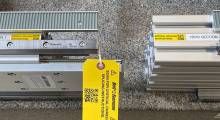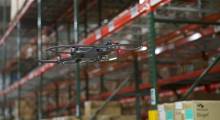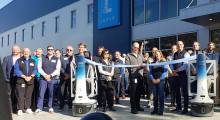Demand Sensing
Demand sensing relies on the automation of analytics, machine learning, and real-time information to improve forecasting for a given facility, such as a retailer or warehouse.
Unlike traditional forecasting, its advantages lie in adjusting the forecast around the clock and enabling continuous improvement in inventory planning.
Unfortunately, failure to realize its benefits remains. Supply chain professionals need to understand why and how to overcome such challenges through efficiency in dock scheduling.
Hurdles of Demand Sensing
Since demand sensing is a process affecting the flow of inbound freight, limited visibility remains its most significant hurdle. Thus, the hurdles of visibility are a direct influence on the value of demand sensing. Challenges with visibility include:
- Limited access to data
- Inability to analyze data or access systems remotely
- Poor integration, if any, of systems
- Lack of inventory visibility
- Poor use of customer data
- Failure to future-proof supply chains during times of crisis
Take added note of the final challenge; limited visibility results in low ability to respond to disruption and uncertainty. The problem only grows worse as product lifecycles shrink.
Demand Sensing Relies on Efficiency in Dock Scheduling
A successful demand sensing program leverages both internal and external data sources to derive the most accurate, near-future model possible.
As explained by Logility, “some appropriate data sources for collecting data in a demand sensing program include sales orders, campaigns and promotions, new production introductions, POS data from the field, economic trends, competitive tactics, consumer behavioral changes, and weather-related information.” Collecting data across the spectrum ensures the most accurate forecast, but it holds added value beyond simple inventory management.
For example, demand sensing improves procurement processes, helping your organization realize when reordering is necessary for advancement. Moreover, such information is valuable to suppliers. Since suppliers have long held power in procurement, demand sensing provides a means to manage inbound freight better, yielding benefits for both parts, explains Logiwa.
How to Increase Dock Management & Efficiency
The steps to increase efficiency in dock scheduling and management lie in gaining control over your facility’s inbound and outbound processes.
A few tips for improving efficiency include:
- Consolidate inbound freight deliveries into the largest possible load. Freight consolidation is an excellent venue for improving dock efficiency. According to MH&L Magazine, the time needed to unload 10-14 LTL shipments is more than the time required to unload a single FT. Efficiency through consolidation also means less time managing gate and yard traffic too.
- Implement dynamic vendor compliance standards, such as a dynamic inbound freight routing guide. It’s more than just sorting the good shipments from the bad and managing chargebacks. It’s about collaborating with your vendors and carriers to identify where the faults lie and finding solutions. Your business can achieve this goal by investing in efficient monitoring, reporting, and communication tools to identify problematic areas.
- Integrate supply chain systems with the dock scheduling software. Integration with the dock scheduling software helps to avoid overlooked issues that may result in disruptions. Moreover, integration allows for more access and application of data for analytics that power demand sensing.
- Negotiate with carriers to secure better rates and status, such as shipper-of-choice status, which may open more delivery windows for use by your organization. Better rates may also amount to added benefits, such as carrier-provided consolidation programs and more.
Reap the Value of Demand Sensing and Better Dock Management Now
Demand sensing is analytics-based, real-time forecasting. But like all forecasting capabilities, it is only as valuable as the ability to change operations and respond to the issues at hand.
In this case, demand sensing means your dock needs to have the flexibility to scale operations and avoid disruptions.
Fortunately, implementing a dock scheduling software that enables efficiency in dock scheduling will go a long way in truly maximizing the value of demand sensing.
Find out more about how your organization can take advantage of such software by scheduling a demo with C3 Solutions online today.
Related Article: Why Automation in Retail Supply Chains Requires Improving Dock Scheduling Capabilities
Related Resources
Supply Chain Visibility: Illuminating the Path to Responsive, Agile Operations
The purpose of this paper is to take a step back and look at what visibility really means in supply chain operations, and what it can do for you - using real-world case studies - along with an outline of the conditions you need to achieve it. Download Now!
Retail Distribution Centre Automation: Using Technology to Stay in the Game
In this paper, you will learn about the changing retail environment and how automation options can be adopted as a means of building the velocity, accuracy, and efficiency it takes to thrive on the retail battlefield. Download Now!
Warehouse Software Systems: The Brains Behind the Operation
In this paper, we look at the absolute fundamental importance of the software systems that underpin distribution center operations: warehouse management systems, warehouse execution systems, and warehouse control systems. Download Now!
Emerging Digital Technologies for the Retail Supply Chain: Strategic Advantage or Big Question Mark?
This paper outlines three rapidly evolving technologies that have demonstrated benefits for supply chain operations; 5G communications, digital twins, and blockchain, and is designed to help you make the critical decisions that will drive your organization forward and stay ahead of the retail game. Download Now!
Artificial Intelligence: Making Machine Learning Analytics Work for Your Retail Operation
In this 'paper' we look at some of the ways warehouse and distribution center operations are evolving, and how to ensure that all your systems are in sync to make the most of new strategies and technologies such as artificial intelligence and machine learning. Download Now!
The Internet of Things: How IoT Is Reshaping Retail The Deal Is in the Data
In this paper, we take an Internet of Things reality check and discovered IoT does have numerous applications for retail operations, but not necessarily where we thought they might be a few years ago. Download Now!
More Resources from C3 Solutions
Article topics
Email Sign Up

























